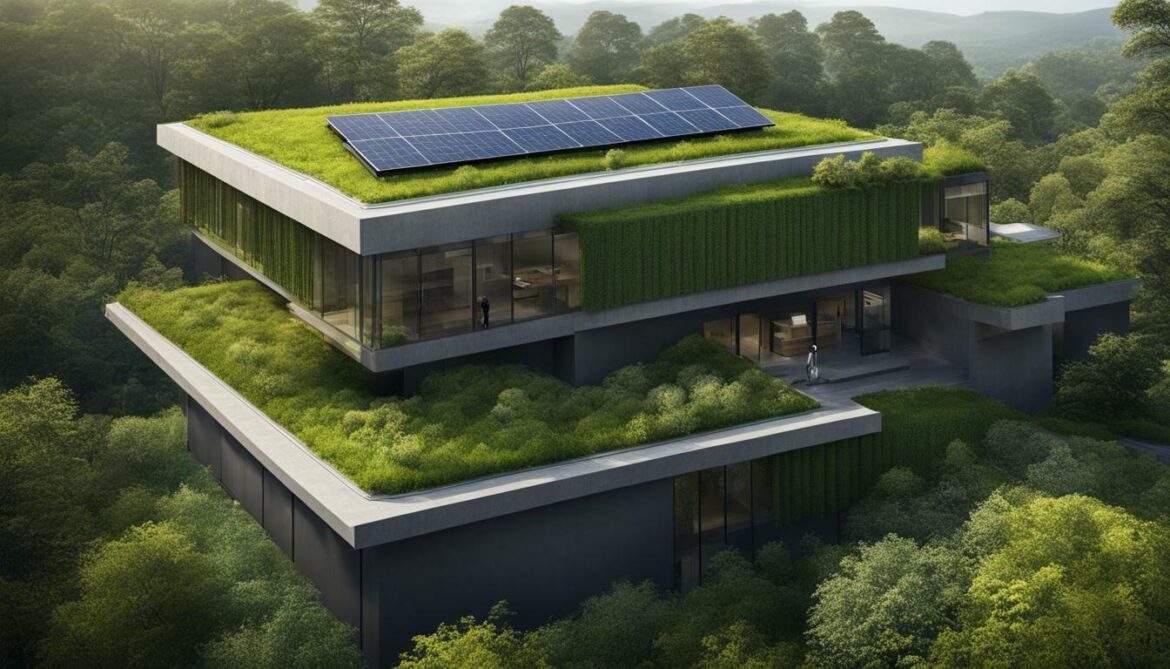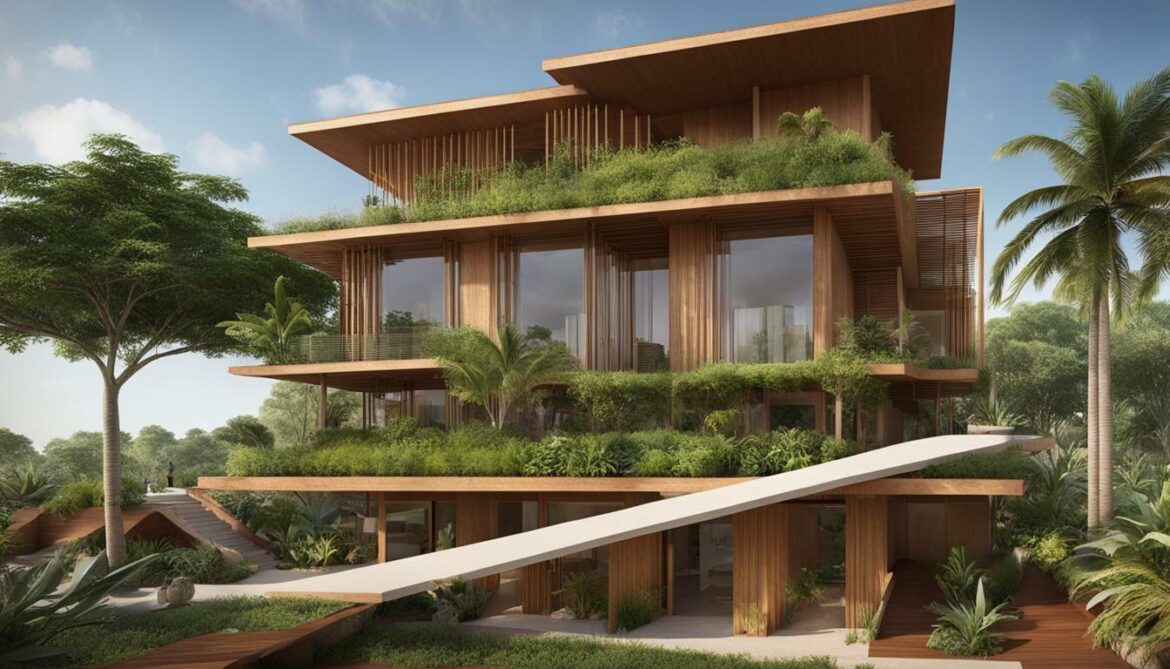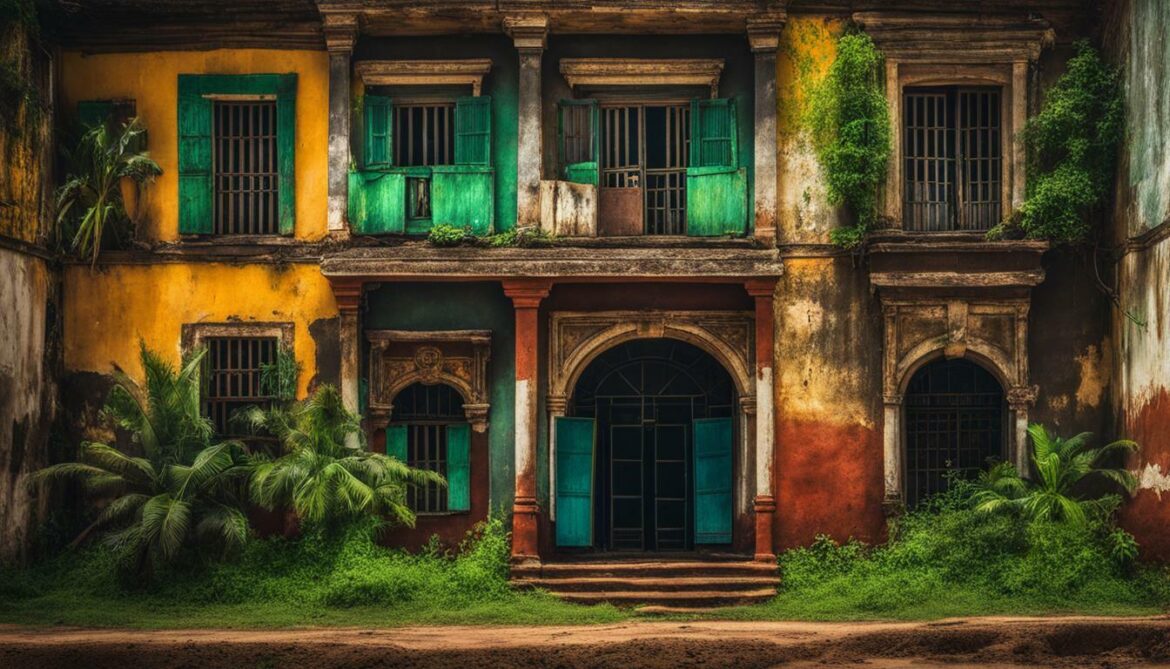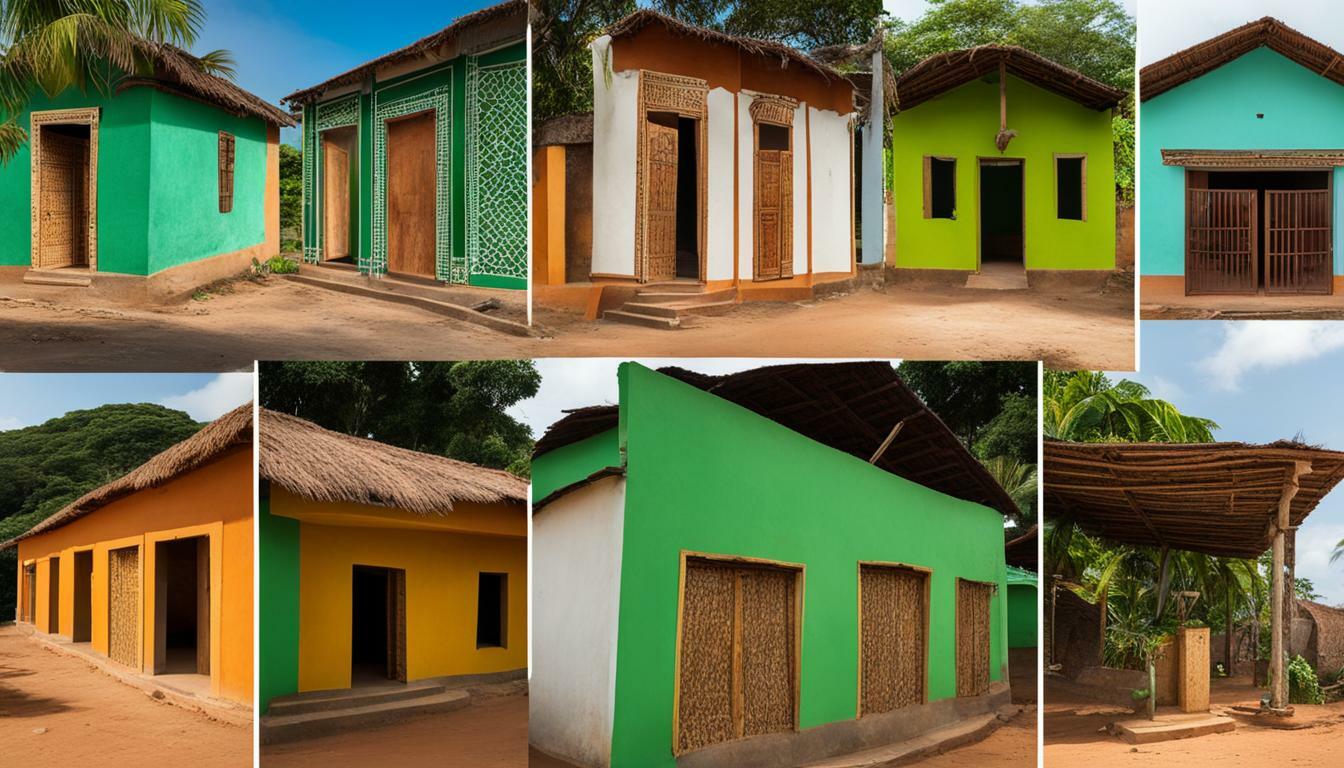Sustainable construction in Guinea-Bissau is not just a recent trend; it has a rich history that dates back many years. The country faces several challenges in its building sector, including urban degradation, a lack of urban identity, and a housing deficit. However, sustainable construction strategies have emerged as a solution to address these issues and provide security, comfort, and economic satisfaction for building users.
One of the key aspects of sustainable construction in Guinea-Bissau is the implementation of bioclimatic or passive design strategies. These strategies focus on using natural elements like shading, orientation, and insulation to protect buildings from solar radiation and promote ventilation. By incorporating these strategies into building design, Guinea-Bissau can create more energy-efficient and environmentally friendly architecture.
Another important aspect of sustainable construction in Guinea-Bissau is the use of local resources. Utilizing materials like earth, which is abundant in the country, not only reduces the carbon footprint but also creates a connection between the built environment and the natural surroundings. This approach to construction not only promotes sustainability but also supports the nation’s green building objectives.
The architectural trends in Guinea-Bissau reflect the nation’s history and cultural influences. From vernacular styles that showcase traditional building techniques to colonial architecture that tells the story of Guinea-Bissau’s colonial past, and contemporary designs that blend modern and traditional elements, the country’s architecture is diverse and dynamic. These architectural trends have also influenced sustainable construction practices, with architects integrating traditional techniques with modern sustainable design principles.
Unfortunately, many historical buildings in Bissau Velho, the old town of Guinea-Bissau’s capital, are neglected and crumbling. This not only represents a loss of cultural heritage but also a missed opportunity to promote sustainable development. The preservation and revitalization of these buildings could serve as a catalyst for promoting sustainable construction and environmentally friendly architecture.
Key Takeaways:
- Sustainable construction practices have played a vital role in shaping Guinea-Bissau’s landscape and culture.
- Bioclimatic design strategies protect buildings from solar radiation and promote natural ventilation.
- Utilizing local resources like earth contributes to sustainable construction in Guinea-Bissau.
- The architectural trends in Guinea-Bissau reflect the nation’s history and cultural influences.
- Neglected historical buildings in Bissau Velho represent a missed opportunity for sustainable development and cultural preservation.
Challenges in the Building Sector of Guinea-Bissau
Guinea-Bissau’s building sector has encountered various challenges, such as urban degradation, lack of urban identity, and a significant housing deficit, necessitating sustainable development initiatives and eco-friendly construction practices. With rapid urbanization and population growth, the country’s cities are struggling to keep up with the demand for adequate housing and infrastructure. As a result, urban degradation has become a pressing issue, leading to the deterioration of existing buildings and the overall degradation of urban environments.
Lack of urban identity is another challenge faced by Guinea-Bissau’s building sector. The rapid development and construction of buildings in some areas have resulted in a lack of cohesive architectural styles and urban planning, leading to a loss of cultural and historical heritage. This not only affects the aesthetic appeal of the cities but also hampers the creation of sustainable and livable urban environments.
Furthermore, Guinea-Bissau is grappling with a significant housing deficit. The lack of affordable and adequate housing options has led to overcrowding, informal settlements, and substandard living conditions for many residents. Sustainable development initiatives and eco-friendly construction practices are crucial for addressing this housing deficit and providing secure, comfortable, and environmentally friendly housing solutions for the population.
| Challenges in the Building Sector of Guinea-Bissau |
| Urban degradation |
| Lack of urban identity |
| Housing deficit |
It is imperative for Guinea-Bissau to prioritize sustainable development in its building sector. By implementing green building practices, such as energy-efficient designs, waste reduction, and the use of eco-friendly materials, the country can mitigate the negative impact of urban degradation, preserve its architectural heritage, and provide affordable housing options for its citizens. By adopting sustainable strategies, Guinea-Bissau can build a resilient and environmentally conscious future.

Bioclimatic Design Strategies in Guinea-Bissau
Guinea-Bissau embraces bioclimatic design strategies as a means to counter the harsh effects of solar radiation, focusing on renewable energy sources, sustainable building materials, and the incorporation of green infrastructure. These strategies are crucial in a country with a tropical climate, where the intense sun and high temperatures pose significant challenges to building design.
One key aspect of bioclimatic design in Guinea-Bissau is the use of renewable energy sources. Solar panels are increasingly being integrated into building designs to harness the abundant sunlight and produce clean energy. This not only reduces the reliance on fossil fuels but also provides a sustainable and cost-effective energy solution for buildings.
Sustainable building materials also play a vital role in bioclimatic design. Locally sourced materials, such as bamboo and compressed earth blocks, are becoming popular choices due to their low environmental impact and high thermal insulation properties. These materials help regulate internal temperatures, keeping buildings cool in the hot climate and reducing the need for excessive air conditioning.
Furthermore, green infrastructure is being incorporated into building designs to enhance sustainability. Rooftop gardens and vertical green walls not only provide insulation but also contribute to improved air quality and reduced urban heat island effect. They create a pleasant environment for building occupants while promoting biodiversity and reducing the overall ecological footprint.
Guinea-Bissau’s commitment to bioclimatic design strategies underscores the importance of sustainable construction in addressing the country’s environmental challenges. By harnessing renewable energy, utilizing sustainable building materials, and integrating green infrastructure, Guinea-Bissau is paving the way for a greener and more resilient built environment.
Benefits of Bioclimatic Design Strategies in Guinea-Bissau
The adoption of bioclimatic design strategies brings numerous benefits to Guinea-Bissau. Firstly, the use of renewable energy reduces greenhouse gas emissions and helps combat climate change. It also provides energy security and reduces reliance on imported fuels, contributing to the country’s energy independence.
Secondly, sustainable building materials promote local economic development and reduce the carbon footprint associated with construction. By utilizing locally sourced materials, Guinea-Bissau reduces transportation costs and supports local communities. Additionally, these materials are often more affordable, making sustainable construction more accessible to a wider population.
Lastly, the integration of green infrastructure improves the quality of life for building occupants. It enhances thermal comfort, reduces noise pollution, and creates a healthier indoor environment. By incorporating nature into the built environment, Guinea-Bissau is fostering a closer connection with the natural world and promoting well-being.
| Benefits of Bioclimatic Design Strategies in Guinea-Bissau |
| – Reduces greenhouse gas emissions |
| – Enhances energy security |
| – Supports local economic development |
| – Improves thermal comfort |
| – Reduces noise pollution |
| – Creates a healthier indoor environment |

Guinea-Bissau recognizes the importance of utilizing local resources, including earth, for sustainable construction practices that align with the nation’s commitment to green building and environmentally conscious development. By harnessing the natural materials found within the country, Guinea-Bissau aims to create buildings that are not only environmentally friendly but also culturally and economically beneficial.
Earth, a readily available and abundant resource, plays a vital role in sustainable construction in Guinea-Bissau. Traditional building techniques that utilize earth, such as adobe, rammed earth, and compressed earth blocks, have been adapted and modernized to meet contemporary architectural and structural requirements. These methods not only minimize the carbon footprint but also provide insulation, thermal comfort, and durability.
Furthermore, the use of earth-based materials promotes local craftsmanship and reduces the dependency on imported construction materials, which can be expensive and environmentally detrimental. By focusing on locally sourced resources, Guinea-Bissau enhances its capacity for sustainable construction, supports the local economy, and preserves its cultural heritage.
| Sustainable Construction Benefits of Local Resources in Guinea-Bissau |
| 1. Reduced carbon footprint and environmental impact |
| 2. Improved thermal insulation and energy efficiency |
| 3. Preservation of cultural heritage and traditional craftsmanship |
| 4. Cost-effectiveness and economic benefits |
| 5. Decreased reliance on imported construction materials |
Guinea-Bissau’s commitment to sustainable construction and environmentally conscious development is evident in its utilization of local resources. By leveraging the benefits of earth-based materials and traditional building techniques, the country not only creates sustainable and resilient structures but also fosters a sense of pride and connection to its rich architectural heritage. Through these practices, Guinea-Bissau paves the way for a greener and more sustainable future.

- Green Building Council of Guinea-Bissau: www.gbcb.org
- Architects Association of Guinea-Bissau: www.aagb.org
Architectural Trends in Guinea-Bissau
Guinea-Bissau’s architectural landscape showcases a blend of vernacular, colonial, and contemporary styles, with each trend leaving a lasting impact on sustainable construction practices in the nation. The country’s rich cultural heritage is evident in the vernacular architecture, which incorporates traditional building techniques and materials that are adapted to the local climate and resources. This approach emphasizes sustainability and the use of environmentally friendly materials.
The colonial era introduced European architectural influences to Guinea-Bissau, resulting in a fusion of styles that can be seen in many government buildings and grand residences. These structures often feature ornate detailing, large windows, and spacious interiors. Despite their historical significance, some of these buildings have fallen into disrepair and require restoration to preserve their architectural heritage.
In recent years, contemporary architecture has gained prominence in Guinea-Bissau. Modern buildings are designed with sustainability in mind, utilizing energy-efficient technologies and environmentally friendly materials. Architects are also incorporating bioclimatic design strategies, such as natural ventilation and shading devices, to minimize the reliance on artificial cooling systems. This approach not only reduces energy consumption but also enhances the comfort and well-being of occupants.

Despite the diverse architectural trends, there is a need to prioritize the preservation and revitalization of neglected historical buildings in Guinea-Bissau, particularly in Bissau Velho. These structures not only contribute to the cultural identity of the country but also offer an opportunity for sustainable development. By restoring and repurposing these buildings, Guinea-Bissau can showcase its history while promoting environmentally friendly architecture and green building practices.
| Architectural Trend |
Key Features |
| Vernacular |
Traditional techniques, locally sourced materials, adaptation to the local climate |
| Colonial |
European influences, ornate detailing, spacious interiors |
| Contemporary |
Sustainability, energy-efficient technologies, bioclimatic design strategies |
Overall, the architectural trends in Guinea-Bissau reflect a fusion of cultural influences and a growing emphasis on sustainable construction practices. By preserving historical buildings and embracing environmentally friendly design principles, the country can create a harmonious blend of tradition and innovation for a more sustainable future.
Neglected Historical Buildings in Bissau Velho
Bissau Velho, the historic district of Guinea-Bissau’s capital city, is home to numerous neglected and crumbling historical buildings, symbolizing the political tensions in the country and representing a lost chance to showcase its rich history and promote sustainable development. These buildings, once vibrant symbols of the nation’s architectural heritage, now stand as reminders of the challenges faced by Guinea-Bissau’s building sector.
The neglect of these historical buildings is a missed opportunity to preserve and revitalize the country’s cultural identity. With their unique architectural designs and historical significance, these buildings could have been transformed into cultural centers, museums, or sustainable tourist attractions that promote economic growth and sustainable development in Guinea-Bissau.
Unfortunately, the political unrest and economic challenges that the country has faced throughout its history have taken a toll on the preservation of these historical buildings. The lack of resources and funding, coupled with the absence of a comprehensive preservation plan, has contributed to their deterioration and abandonment.

It is essential for Guinea-Bissau to recognize the value of these neglected historical buildings and take immediate action to preserve and restore them. By doing so, the country can reclaim its cultural heritage, attract tourism, and showcase the importance of environmentally friendly architecture and sustainable development.
| Challenges |
Solutions |
| Lack of funding |
Seek financial support from international organizations and government initiatives to restore and maintain the buildings. |
| Urban degradation |
Implement urban revitalization programs to improve the infrastructure and appearance of Bissau Velho. |
| Lack of awareness |
Launch awareness campaigns to educate the public about the historical and cultural significance of these buildings, fostering a sense of pride and ownership. |
| Capacity building |
Train local artisans and craftsmen in traditional building techniques to ensure the authentic restoration of these historical buildings. |
| Tourism promotion |
Develop sustainable tourism initiatives that highlight the historical buildings of Bissau Velho and create economic opportunities for the local community. |
Conclusion
The history of green building in Guinea-Bissau highlights the vital role that sustainable construction practices and environmentally friendly architecture have played in shaping the nation’s landscape and fostering its future development. Guinea-Bissau, like many countries, faces numerous challenges in its building sector, including urban degradation, lack of urban identity, and a housing deficit. However, through the implementation of sustainable construction strategies, these issues can be effectively addressed, providing security, comfort, and economic satisfaction for building users.
Bioclimatic or passive design strategies, such as shading, orientation, and insulation, are essential in Guinea-Bissau to protect buildings from solar radiation and encourage natural ventilation. By utilizing these strategies, buildings can maximize their energy efficiency and reduce their environmental impact, contributing to a more sustainable future.
Moreover, the use of local resources, such as earth, in construction projects promotes sustainability in Guinea-Bissau. Embracing environmentally conscious practices ensures that the country’s natural resources are preserved and that the construction industry minimizes its carbon footprint.
While Guinea-Bissau’s architecture has been shaped by vernacular, colonial, and contemporary trends, there is a need to address the neglect of historical buildings, particularly in Bissau Velho. These structures, which reflect the country’s history, have been left abandoned and crumbling, mirroring the political tensions in Guinea-Bissau. The preservation and revitalization of these buildings not only serve as a reminder of the country’s past but also present an opportunity to promote sustainable development and showcase the importance of environmentally friendly architecture.
In conclusion, sustainable construction practices and environmentally friendly architecture are key pillars in Guinea-Bissau’s quest for development and progress. By prioritizing these principles, the nation can overcome its challenges, create a more resilient built environment, and pave the way for a sustainable future.
FAQ
What is the history of green building in Guinea-Bissau?
The history of green building in Guinea-Bissau highlights the importance of sustainable construction and environmentally friendly architecture in addressing various challenges faced by the country’s building sector.
What challenges does Guinea-Bissau’s building sector face?
Guinea-Bissau’s building sector faces challenges such as urban degradation, lack of urban identity, and a housing deficit. Sustainable development and green building practices are essential for addressing these issues.
What are bioclimatic design strategies in Guinea-Bissau?
Bioclimatic design strategies in Guinea-Bissau focus on using shading, orientation, and insulation to protect buildings from solar radiation and promote natural ventilation. These strategies contribute to sustainable construction and environmentally friendly architecture.
How do local resources contribute to sustainable construction in Guinea-Bissau?
Utilizing local resources, such as earth, plays a significant role in sustainable construction in Guinea-Bissau. Embracing environmentally conscious construction practices supports the country’s green building objectives.
What are the architectural trends in Guinea-Bissau?
Guinea-Bissau’s architectural trends encompass vernacular, colonial, and contemporary styles. These trends have evolved over time and influenced sustainable construction practices in the country.
What is the state of neglected historical buildings in Bissau Velho?
Neglected historical buildings in Bissau Velho reflect the political tensions in Guinea-Bissau. The neglect of these buildings represents a missed opportunity to showcase the country’s history and promote sustainable development.
Source Links























Post comments (0)